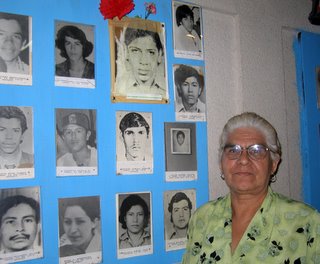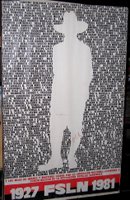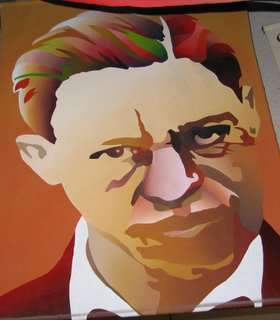Estelí, Nicaragua

[I'm continuing to have problems uploading photos. So I'm going to publish this posting now, and update it as time permits.]
The rainy season is entering its late stages in Central America and it’s time to start thinking of moving further down the coast of Nicaragua and into Costa Rica. Horizons has been based in Marina Puesta del Sol, Nicaragua, since the end of April and it has been a very enjoyable stay. Some necessary work was done on the boat during the early part of my stay, but mostly I’ve been doing other projects.
I visited Granada, the island of Ometepe and León last year, when I was based in El Salvador. I also fit in a short visit to San Juan del Sur on the way back from my recent visit to Costa Rica. But I couldn’t leave Nicaragu
 a without first taking a trip to the northern highlands.
a without first taking a trip to the northern highlands.Estelí was my first destination, by way of Chinandega and León. Except for the InterAmerican Highway section, the road was rough and slow. Estelí lies at an elevation of 2675 feet and is located about halfway between Managua and the Honduran border, on the main highway. It is primarily an agricultural town, with the addition of the production of livestock and cheese. Cotton, tobacco, sesame and various fruits and vegetables make up the agricultural production. As in most rural and many urban
 areas, horses are relied upon for much of the personal, public and business transportation and haulage. On one street in the southern part of town, not far from one of the market areas, is a concentration of saddleries which make and repair all the necessary hardware for equipping the horses.
areas, horses are relied upon for much of the personal, public and business transportation and haulage. On one street in the southern part of town, not far from one of the market areas, is a concentration of saddleries which make and repair all the necessary hardware for equipping the horses.As in other parts of Nicaragua, the people were very friendly. But I found the street kids to be more “friendly” than most I’ve encountered, often sticking to me like glue and remaining with me for many blocks as I walked around. It was sometimes very hard to shake them off. One even accompanied me uninvited into a restaurant and sat at my table while I had lunch. They also all seem to think that they know my name. But “Juan” is not my name. Nor is “Peso” my last name. “Juan Peso, Juan Peso!” they call me. Sometimes it’s “Juan Córdoba”. Persistent they may be, but generally they are quite good natured. And for security reasons, I keep some space between us.
Unfortunately, poverty is a widespread condition in Nicaragua with little in the way of social benefits. It’s impossible for individual tourists and travelers to alleviate
 the problem. One can give small amounts of money to some from time to time, but there are just too many.
the problem. One can give small amounts of money to some from time to time, but there are just too many.Estelí was one area which saw a lot of heavy fighting during the Revolution which in 1979 overthrew the American-backed brutal dictator Anastasio Somoza Debayle, the last Somoza of the 46 year dynasty. Much of the centre of the town was left in ruins, and there are some buildings remaining which can still be seen with pockmarks of bullet holes from the fighting.

One of the places of interest in Estelí is the small Galería de Héroes y Mártires operated by the Madres de los Héroes y Mártires. These are mothers who lost sons, daughters and other family members in the fighting during the Revolution. There are many photos on all the walls of a number of those local men and women who died, most of them being very young. Each photo has the name and the date killed printed underneath.

Guillermina Meza, now aged 59, was the mother in attendance at the museum when I visited. Her two sons were killed on April 10, 1979. The older son, Efrain Rugana Meza, was 17 years old, and the younger one, Juan José Blanco Meza, was only 15. The accompanying photos show Guillermina beside the photos of her sons, which are the ones above her head with the red flowers. The impact of these and all the other photos was quite moving. Guillermina herself was very friendly and warm, with a mixture of pride, serenity and sadness – even now, after so many years. She was genuinely appreciativ
 e of the interest I was taking, and spontaneously hugged me before I left.
e of the interest I was taking, and spontaneously hugged me before I left.One of the many photos in the gallery was of José Benito Escobar, one of the leaders of the GPP (Prolonged People’s War) tendency of the Sandinistas. Of the three “tendencies” of the Sandinistas, the GPP focused on the guerilla war in the northern mountains. Gioconda Belli, a Nicaraguan poet, author and revolutionary herself, describes her meeting and positive impression of Escobar in her 2001 (translation: 2002) boo
 k, The Country Under My Skin. Escobar was killed in Estelí in July,1978, while fighting against Somoza’s National Guard.
k, The Country Under My Skin. Escobar was killed in Estelí in July,1978, while fighting against Somoza’s National Guard.Augusto César Sandino was a passionate patriot who organized and led a military campaign in 1927 to oust American control from Nicaragua. Persistent American intereference in Nicaraguan internal affairs from the mid 19th century, including several invasions by US Marines, fostered a nationalist movement in the early 20th century. The US Marines finally withdrew from Nicaragua in 1932, and Sandino's forces laid down thei
 r arms in 1933 after the signing of a peace agreement with the government. Sandino was assassinated on the orders of the dictator Anastasia Somoza Garcia in 1934.
r arms in 1933 after the signing of a peace agreement with the government. Sandino was assassinated on the orders of the dictator Anastasia Somoza Garcia in 1934.Sandino's silhouette in stetson and riding breeches has become a national symbol in Nicaragua.
Other exhibits in the museum include photos and paintings of some of the national revolutionary heroes, some remnant weapons and accessories, and some murals on the external walls. Posters of Sandino and Carlos Fonseca are shown below.
M
 urals are a prominent feature of Estelí. They can be seen in many places around the town, often in unlikely places. Some have powerful political themes. When I visited the Casa de Cultura, I met a mural artist who has painted murals in a number of towns and communities around the country. He showed me a binder/portfolio of photos of many of his works, which were very impressive. Some murals appeared multi-layered, with different images appearing, depending on how you viewed them and how far back you stood. Mural painting as a means of expression, as well as political expression, is a p
urals are a prominent feature of Estelí. They can be seen in many places around the town, often in unlikely places. Some have powerful political themes. When I visited the Casa de Cultura, I met a mural artist who has painted murals in a number of towns and communities around the country. He showed me a binder/portfolio of photos of many of his works, which were very impressive. Some murals appeared multi-layered, with different images appearing, depending on how you viewed them and how far back you stood. Mural painting as a means of expression, as well as political expression, is a p opular art form in Nicaragua. I saw many during my first visit to León early last year. This binder/portfolio also contained a fairly recent photo of this artist with revolutionary leader and former President Daniel Ortega during a visit by Ortega to this cultural centre.
opular art form in Nicaragua. I saw many during my first visit to León early last year. This binder/portfolio also contained a fairly recent photo of this artist with revolutionary leader and former President Daniel Ortega during a visit by Ortega to this cultural centre.
The Casa de Cultura provides courses in art and music to its students. Guitar lessons were taking place in one room; and in another, a kind of mosaic art using what looked like dyed palm leaves or the outer leaves from corn ears. These dried leaves were cut up into small p
 ieces and assembled into pictures by gluing them onto a board.
ieces and assembled into pictures by gluing them onto a board. The political mural below is one example of many to be seen around Estelí and other locations.
The political mural below is one example of many to be seen around Estelí and other locations.



1 Comments:
Hi Bob - great post on Nicaraguan history. I have a book called Sandino's Daughters, writeen by Margaret Randall and published in 1981 by New Star Books, a company I was then working for(I think I proofread the book) - you might find it interesting. It's accounts of women's experiences during the overthrow of Somoza.
Kathy F.
Post a Comment
<< Home